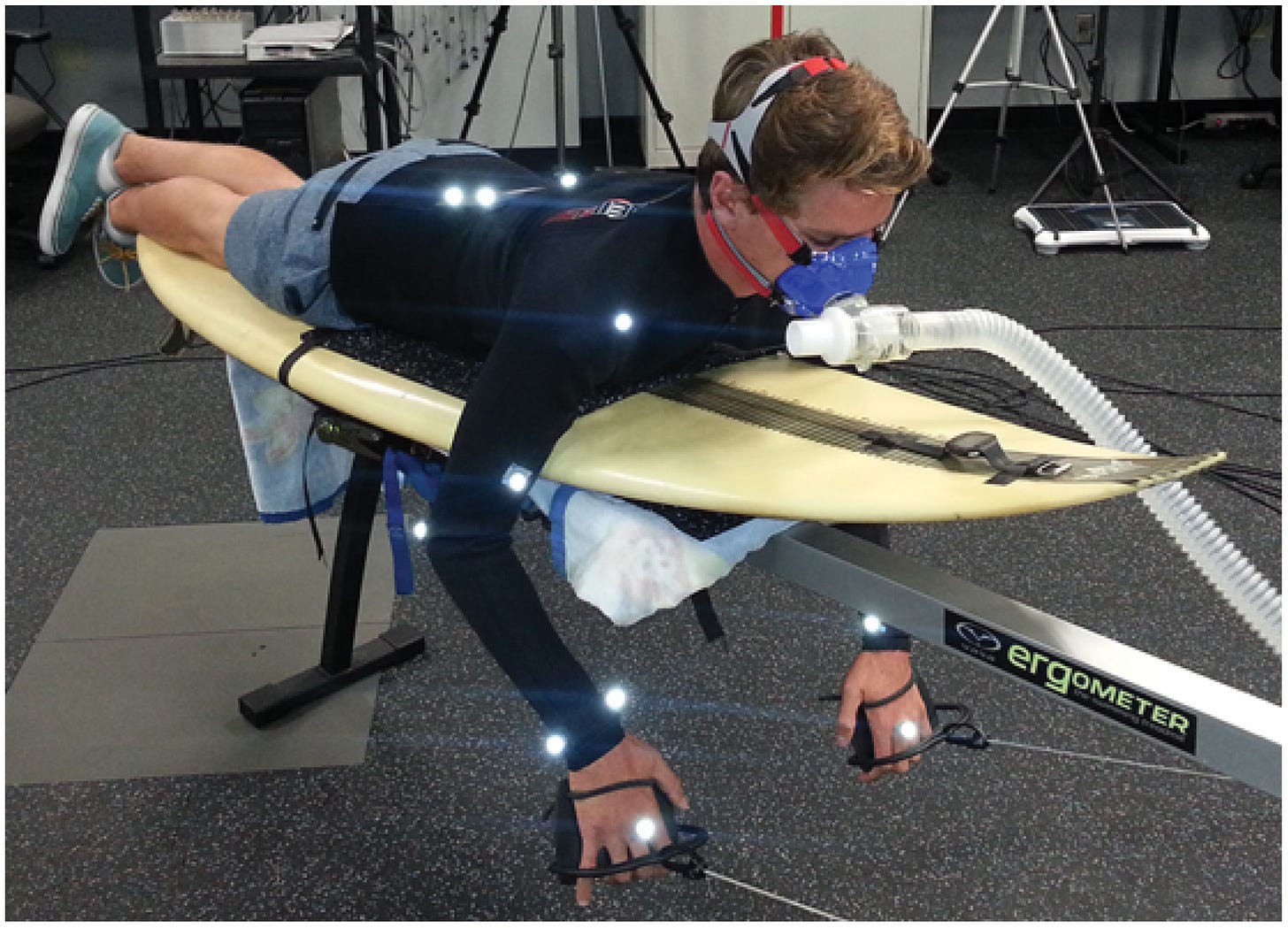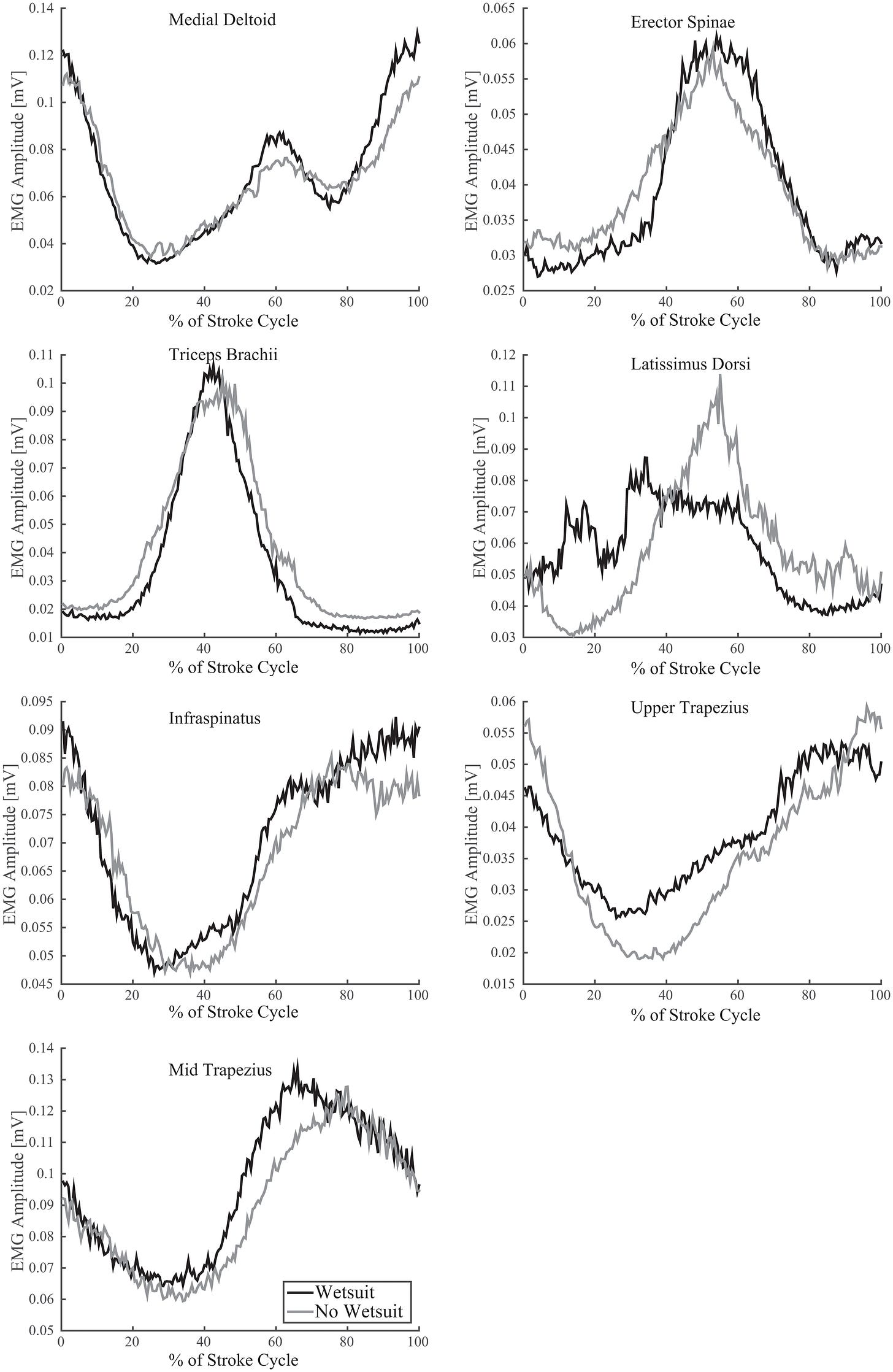A 2015 study by Jeff Nessler and colleagues at Cal State San Marcos investigated how wetsuits affect our paddling mechanics. While thicker suits like 8mm clearly restrict movement, the impact of standard Southern California 3/2s and 4/3s remained unclear. The researchers wondered: does neoprene help by increasing body awareness, or hinder by adding resistance?
Their experiment centered on a, let’s say, creative setup - a surfboard mounted to a rowing machine. Twelve male surfers donned a 2mm wetsuit top equipped with lights for motion-tracking. The rowing machine provided water-like resistance while instruments measured heart rate, skin temperature, and oxygen consumption. Electrodes monitored muscle activation throughout their 5-minute paddling sessions, both with and without the wetsuit. The electromyography (EMG) machine tracked which muscles fired and when, giving detailed insight into the paddling mechanics.

The results revealed subtle but significant changes. Wetsuit-equipped surfers showed deeper, more variable paddle strokes without altering stroke length or timing. The researchers quantified this using "Approximate Entropy" - essentially a measure of stroke complexity that helped them understand how consistently the surfers were paddling. While oxygen consumption stayed constant between conditions, skin temperature predictably rose when wearing the wetsuit.
Most muscles worked equally hard regardless of attire, with one exception: the middle deltoid in the shoulder increased activity when paddling in neoprene. The data showed the latissimus dorsi and triceps brachii muscles powered the middle of each stroke, which makes sense given these are the primary pulling muscles in swimming motions. Interestingly, the lats displayed a different firing pattern with the wetsuit - engaging longer but less intensely during each stroke. Although this wasn’t addressed directly in the paper, this suggests the neoprene might be helping distribute the workload more evenly throughout the paddle motion.

The wetsuit appeared to enhance proprioception - that sense of where your body is in space. The tactile feedback from the neoprene led surfers to dig deeper without burning extra energy. Only that single shoulder muscle had to work harder to overcome the suit's resistance. This finding challenges the assumption that wetsuits universally increase paddling difficulty.
Keep in mind, this was all measured on a board strapped to a rowing machine, in a dry wetsuit in a lab environment. How this translates to the ocean, or even to thicker wetsuits like a 4/3 is undetermined. Still, a very cool finding and another reason why I love my topper.
Further Reading:




I’m out in Ireland at the moment on a bit of a roady and it’s my first time surfing in a hood with boots and gloves. It’s been a mega adaptation for me! I’ve got the Finisterre 5mm and I couldn’t be warmer but man it’s tight!! I absolutely agree on the proprioceptive feedback front, I’ve felt very ‘in’ my body which is its own learning curve out there
Interesting in an abstract kind of way. As a science teacher and life long surfer, I have always taken an interest in the science. I think the major scientific contributions to surfing have come from research on other issues. For my money, the advances in materials and weather forecasting have had massive impacts. The standardisation and precision of compterised design and shaping have also been influential, though the bigger picture is that surfboard design has never developed from a theoretical base. Trial and error and a selection process related to evolution have been dominant.